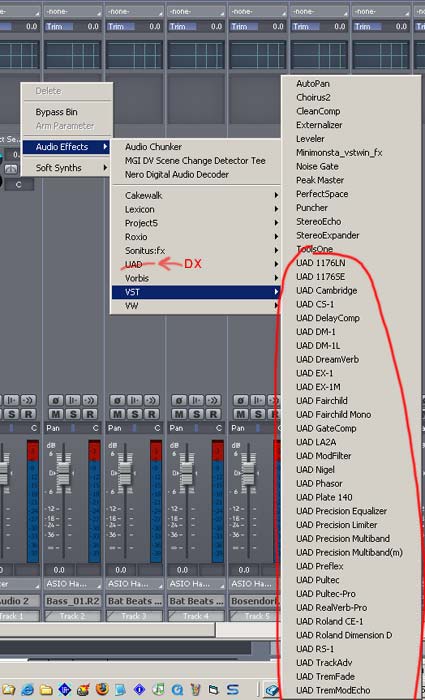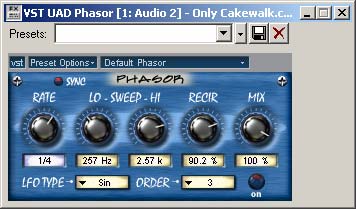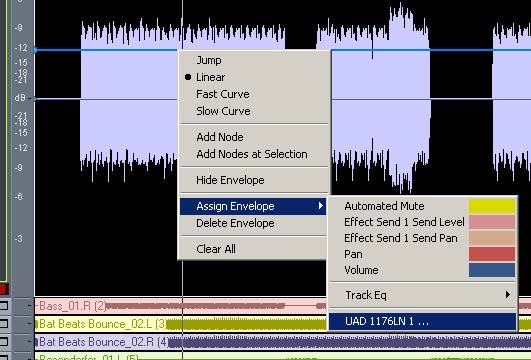Support Report: VST replaces DX support in UAD-1 V.4.1
By Greg Westall, Jor Van Gelder and Brett Patrick
Some time later this month, UA will discontinue support for the DX plug-in platform concurrent with the release of UAD-1 V. 4.1. Most DX applications, like Cakewalk Sonar and Sony Vegas, are already compatible with VST plug-ins, and as a result the industry as a whole is moving away from DX as a plug-in standard. Those of you who use UAD-1 powered plug-ins in Cakewalk or Sony applications have already seen the dual list of VST and DX plug-ins.
“VST plug-in support is simply more compatible, widespread and comprehensive, so UA is focusing its efforts on better VST implementation and testing, instead of splitting its resources in order to prop up DX.”
 |
|
Figure 1: DX support is going away, but notice that the VST versions of the UAD-1 Powered Plug-Ins are already installed.
|
VST plug-in support is simply more compatible, widespread and comprehensive, so UA is focusing its efforts on better VST implementation and testing, instead of splitting its resources in order to prop up DX. For example, UAD-1 VST users have access to Tempo Sync (of delay time and LFO speed), which was not available in the UAD-1 DX plug-ins. We're hoping that all remaining DX users will upgrade to V.4.1. There will be new plug-ins, like the new Precision Multiband Processor, and a steady stream of new features that UA can deliver to you once you've made the leap to VST.
 |
|
Figure 2: VST UAD Plug-Ins support tempo sync, unlike DX
|
Recommended steps for migrating from DX to VST:
(If you are a Cakewalk user, make sure you have run the Cakewalk VST Adapter to make UAD-1 VST plug-ins available.)
- First make sure you have already upgraded to UAD-1 V.4.0 for complete preset compatibility between DX and VST.
- Save your DX plug-in settings and presets as VST by using the Tools menu. This way you'll be able to load your existing settings and favorite presets into your new VST-based projects.
 Figure 3: Save your DX settings as VST presets
Figure 3: Save your DX settings as VST presets - By saving presets, you can also optionally replace UAD-1 DX plug-ins with VST plug-ins in an existing project. In Sonar, after replacing DX plug-ins with VST versions, reassign any orphaned automation envelopes: right-click the envelope and select Assign Envelope>(Plugin name)
 Figure 4: Reassigning automation to the VST version
Figure 4: Reassigning automation to the VST version - Keep your old UAD-1 V.4.0 software available to open old projects that still use DX plugs. Segueing back and forth between V.4.x and V.4.0 should be no problem, but does require re-installation of the software to switch versions. However, remember you cannot mix and match DX and VST plug-ins. Projects that contain both are prone to errors.
- Start building all new recording projects using VST plug-ins instead of DX plugs. Simply load the VST versions of the same UAD-1 plugs that you know and love. (See Image 1 above.)